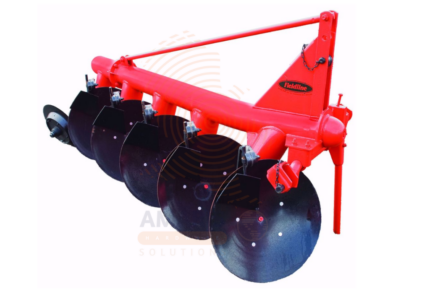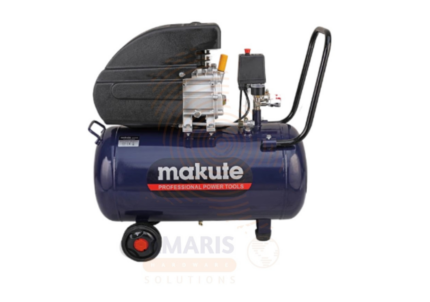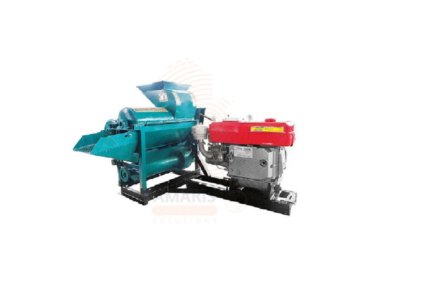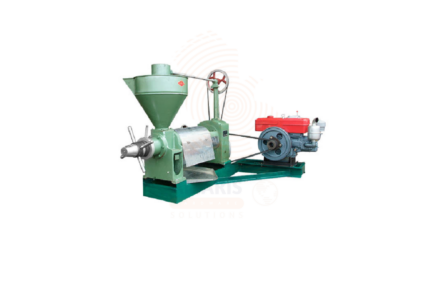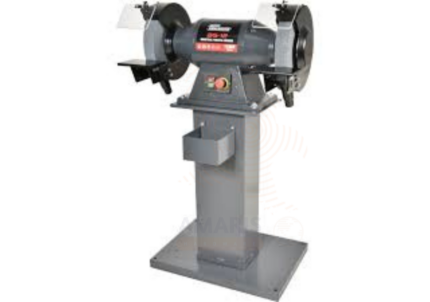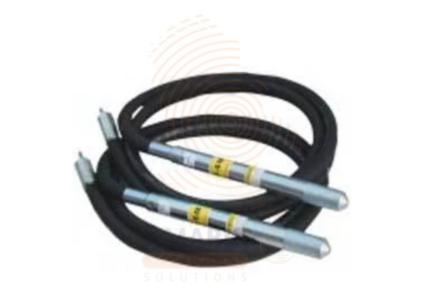Back to products
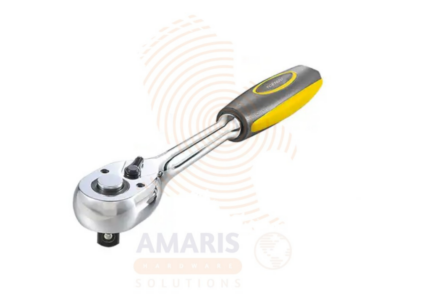

Drive Rotator Ratchet
$21.92 Original price was: $21.92.$20.82Current price is: $20.82.
Egg Incubator
WhatsApp Order
An egg incubator is a specialized device designed to artificially hatch eggs by maintaining optimal temperature, humidity, and ventilation conditions. This equipment simulates the natural environment provided by brooding birds, ensuring consistent warmth and air circulation to promote healthy embryo development. Egg incubators are widely used in poultry farming, hatcheries, research, and educational settings to increase hatch rates, control breeding cycles, and improve the efficiency of egg hatching processes.
Description
Table of Contents
ToggleEgg Incubator
Uses
-
Artificial Hatching
o Provides controlled temperature and humidity to hatch eggs without the need for a brooding bird.
o Enables large-scale hatching in commercial poultry farms to meet demand efficiently. -
Breeding Control
o Allows precise timing of hatching cycles to synchronize chick availability.
o Facilitates selective breeding programs by hatching eggs from chosen stock. -
Species Conservation
o Supports breeding programs for endangered bird species by providing safe incubation environments.
o Helps preserve genetic diversity through controlled incubation. -
Research and Education
o Used in scientific studies on embryonic development and genetics.
o Provides hands-on learning experiences for students in biology and agriculture. -
Hatchery Operations
o Enables mass hatching in hatcheries with automated temperature and humidity controls.
o Reduces reliance on natural brooders and improves hatch rates. -
Improved Hatch Rates
o Minimizes risks of temperature fluctuations and contamination compared to natural incubation.
o Ensures better chick viability through precise environmental control. -
Specialized Egg Types
o Used for incubating a variety of eggs including poultry (chicken, duck, quail) and exotic birds.
o Adapts to different species’ incubation requirements with adjustable settings.
SAFETY HANDLING PRECAUTIONS
Safety Precautions
-
Proper Electrical Setup
o Ensure the incubator is plugged into a properly grounded outlet to avoid electrical hazards.
o Avoid using extension cords or adapters that can overload circuits. -
Temperature Monitoring
o Regularly check temperature settings and calibrate sensors to prevent overheating or chilling of eggs.
o Use backup thermometers for safety. -
Humidity Control
o Maintain recommended humidity levels to avoid dehydration or excess moisture, which can harm embryos.
o Keep water reservoirs clean to prevent bacterial growth. -
Ventilation
o Ensure adequate airflow to supply oxygen and remove carbon dioxide inside the incubator.
o Avoid blocking air vents or overcrowding eggs, which can suffocate embryos. -
Handling Eggs Safely
o Wash hands before handling eggs to reduce contamination risks.
o Turn eggs gently according to manufacturer guidelines to promote proper embryo development. -
Cleaning and Maintenance
o Regularly clean incubator surfaces and trays with non-toxic disinfectants to prevent mold and pathogens.
o Disconnect power before cleaning to avoid electric shock. -
Avoid Overcrowding
o Do not exceed the recommended number of eggs to ensure uniform temperature and airflow. -
Emergency Preparedness
o Have a plan for power outages, including backup power sources if possible, to maintain incubation conditions.
o Familiarize yourself with the incubator’s manual and emergency shutdown procedures. -
Training and Manual
o Read and understand the manufacturer’s instructions thoroughly before use.
o Only trained personnel should operate or adjust the incubator settings.
Related products
Direct Drive Air Compressor
A direct drive air compressor is a type of air compressor where the motor is directly connected to the compressor pump, typically without the use of belts or gears. In this configuration, the motor and the pump share a common shaft, resulting in a more compact and efficient design. Direct drive compressors are known for their simplicity, reduced maintenance requirements, and higher power transmission efficiency compared to belt-driven or gear-driven counterparts. They are commonly used in various applications, including powering pneumatic tools, inflating tires, and providing compressed air for industrial processes.
Hose for Air Compressor
A Hose for Air Compressor is a flexible and durable conduit designed to connect the air compressor to pneumatic tools, equipment, or other devices requiring compressed air. Typically made of materials such as rubber, PVC, or hybrid blends, these hoses are capable of withstanding high pressure and provide a pathway for the compressed air to flow from the compressor to the intended application. The hose facilitates the efficient and controlled transfer of compressed air, enabling various pneumatic tools and devices to operate effectively in a wide range of industrial, automotive, and household applications.
Maize Sheller
A Maize Sheller is a mechanical device designed to remove kernels from maize cobs efficiently and with minimal kernel damage. It significantly reduces the time and labor required for traditional shelling methods, making it ideal for agricultural operations, farms, and food processing units. Shellers are available in manual, electric, and diesel-powered variants, and are often constructed from heavy-duty metal for durability in demanding environments. Their consistent shelling capacity improves productivity, reduces post-harvest losses, and ensures cleaner grain output ready for storage or milling.
Oil Expeller
An Oil Expeller is a mechanical device used to extract oil from oil-bearing seeds and nuts through a process of high-pressure mechanical pressing. It typically consists of a screw shaft, pressing chamber, and power system (manual, electric, or engine-driven), and is widely used in small-scale farms, local oil mills, and commercial processing units. Capable of handling materials like sunflower seeds, groundnuts, soybeans, mustard, coconut, and sesame, oil expellers are available in both cold press and hot press variants. This machine enables efficient, chemical-free oil extraction, producing unrefined oil and residual seed cake for further use.
Oil Pot
Pedestal Grinder
A Pedestal Grinder is a robust, stationary grinding machine mounted on a pedestal stand and designed for heavy-duty grinding, sharpening, shaping, and polishing tasks. It typically features two grinding wheels—coarse and fine—on either end of a motor-driven shaft. Widely used in workshops, fabrication units, and maintenance departments, pedestal grinders are ideal for sharpening tools, removing burrs, cleaning welds, and refining metal components. The fixed design ensures stability, while adjustable tool rests and safety guards enhance control and operator protection during high-speed grinding operations.
Poker vibrator shaft
A poker vibrator shaft, also known as a concrete vibrator shaft or simply a vibrator shaft, is a tool used in construction and concrete work. It consists of a long, slender, and flexible rod or shaft, typically made of steel, with an eccentrically mounted vibrator head at one end. The vibrator head contains an electric or pneumatic motor that generates vibrations.
The primary purpose of a poker vibrator shaft is to consolidate and remove air pockets or bubbles within freshly poured concrete. When the vibrator head is immersed in the concrete mix, the vibrations it generates help to ensure uniform distribution of the concrete, enhance its density, and eliminate voids. This process, known as concrete consolidation, improves the strength and durability of the concrete structure.
Stone Crusher
A stone crusher is a heavy-duty machine designed to reduce large rocks into smaller stones, gravel, or rock dust for use in construction, road building, and other aggregate applications. These machines use mechanical force to break down stone material, typically through compression or impact. Stone crushers come in various types such as jaw crushers, cone crushers, impact crushers, and hammer crushers, each suited to specific crushing requirements. They are widely used in mining, quarrying, construction, and recycling industries to produce consistent aggregate sizes for foundations, concrete, asphalt, and more.


 Acrylic Sealants
Acrylic Sealants Construction Adhesives
Construction Adhesives Double-Sided Tape
Double-Sided Tape Duct Tape
Duct Tape Electrical Tape
Electrical Tape Epoxy & Resins
Epoxy & Resins Masking Tape
Masking Tape
 Automotive Wrenches & Socket Sets
Automotive Wrenches & Socket Sets Battery Chargers & Jump Starters
Battery Chargers & Jump Starters Car Jacks & Stands
Car Jacks & Stands Car Wash & Detailing Products
Car Wash & Detailing Products Diagnostic Tools
Diagnostic Tools Tire Inflators
Tire Inflators Vehicle Lighting
Vehicle Lighting Oil & Lubricants
Oil & Lubricants
 Adhesives & Sealants
Adhesives & Sealants Bricks & Blocks
Bricks & Blocks Cement & Concrete
Cement & Concrete Drywall & Plaster
Drywall & Plaster Flooring (Tiles, Wood, Laminate)
Flooring (Tiles, Wood, Laminate) Lumber & Plywood
Lumber & Plywood Paints, Primers & Coatings
Paints, Primers & Coatings Insulation Materials
Insulation Materials Roofing Materials
Roofing Materials
 Circuit Breakers
Circuit Breakers Electrical Cables & Wires
Electrical Cables & Wires Switches & Sockets
Switches & Sockets Fuses & Relays
Fuses & Relays Connectors & Terminals
Connectors & Terminals Electrical Boxes & Panels
Electrical Boxes & Panels Conduit & Fittings
Conduit & Fittings Lighting Fixtures & Bulbs
Lighting Fixtures & Bulbs Extension Cords & Power Strips
Extension Cords & Power Strips
 Anchors
Anchors Bolts
Bolts Clips & Clamps
Clips & Clamps Screws
Screws Nuts
Nuts Washers
Washers Rivets
Rivets Nails
Nails Threaded Rods
Threaded Rods
 Hammers
Hammers Measuring Tools (Tapes, Levels, Calipers)
Measuring Tools (Tapes, Levels, Calipers) Screwdrivers
Screwdrivers Pliers & Cutters
Pliers & Cutters Saws & Blades
Saws & Blades Chisels & Punches
Chisels & Punches Allen Keys & Hex Keys
Allen Keys & Hex Keys Ratchets & Socket Sets
Ratchets & Socket Sets Wrenches & Spanners
Wrenches & Spanners
 Power Tool Accessories (Blades, Bits, Discs)
Power Tool Accessories (Blades, Bits, Discs) Rotary Tools
Rotary Tools Saws (Circular, Jigsaw, Reciprocating)
Saws (Circular, Jigsaw, Reciprocating) Drills & Drivers
Drills & Drivers Grinders & Sanders
Grinders & Sanders Heat Guns
Heat Guns Nail Guns
Nail Guns Impact Wrenches
Impact Wrenches Batteries & Chargers
Batteries & Chargers
 Pipes & Fittings (PVC, Copper, PEX)
Pipes & Fittings (PVC, Copper, PEX) Plumbing Tools
Plumbing Tools Pumps & Motors
Pumps & Motors Sealants & Adhesives for Plumbing
Sealants & Adhesives for Plumbing Valves & Taps
Valves & Taps Water Heaters
Water Heaters Drainage Systems
Drainage Systems Faucets & Fixtures
Faucets & Fixtures Hoses & Tubing
Hoses & Tubing
 Hinges & Latches
Hinges & Latches Hooks & Brackets
Hooks & Brackets Window Hardware
Window Hardware Chains & Cables
Chains & Cables Casters & Wheels
Casters & Wheels Shelving & Storage Systems
Shelving & Storage Systems Door Handles & Locks
Door Handles & Locks Drawer Slides & Cabinet Hardware
Drawer Slides & Cabinet Hardware
 Personal Protective Equipment (PPE)
Personal Protective Equipment (PPE) Respirators & Masks
Respirators & Masks Safety Glasses
Safety Glasses Safes
Safes Security Cameras
Security Cameras Gloves
Gloves Helmets
Helmets Ear Protection
Ear Protection Fire Safety Equipment
Fire Safety Equipment Locks & Padlocks
Locks & Padlocks Motion Sensors & Alarms
Motion Sensors & Alarms
 Garden Fencing
Garden Fencing Garden Furniture Hardware
Garden Furniture Hardware Lawn Mowers
Lawn Mowers Trimmers & Edgers
Trimmers & Edgers Shovels & Spades
Shovels & Spades Rakes & Hoes
Rakes & Hoes Pruning Shears & Loppers
Pruning Shears & Loppers Watering Systems (Hoses, Sprinklers, Nozzles)
Watering Systems (Hoses, Sprinklers, Nozzles)
 Interior Paints
Interior Paints Paint Brushes & Rollers
Paint Brushes & Rollers Paint Strippers & Thinners
Paint Strippers & Thinners Paint Trays & Accessories
Paint Trays & Accessories Exterior Paints
Exterior Paints Spray Paints
Spray Paints Primers & Undercoats
Primers & Undercoats Varnishes & Stains
Varnishes & Stains
 Gaskets & Seals
Gaskets & Seals Hydraulic Fittings
Hydraulic Fittings Industrial Fasteners
Industrial Fasteners Industrial Hoses
Industrial Hoses Lubricants & Greases
Lubricants & Greases Metal Sheets & Bars
Metal Sheets & Bars Bearings & Bushings
Bearings & Bushings Belts & Pulleys
Belts & Pulleys
 HVAC Filters
HVAC Filters Insulation for HVAC
Insulation for HVAC Air Conditioners
Air Conditioners Refrigerants
Refrigerants Ventilation Ducts & Fittings
Ventilation Ducts & Fittings Thermostats & Controllers
Thermostats & Controllers Fans & Blowers
Fans & Blowers
 Pegboards & Hooks
Pegboards & Hooks Shelving Units
Shelving Units Storage Bins & Containers
Storage Bins & Containers Toolboxes & Tool Chests
Toolboxes & Tool Chests Workbenches
Workbenches Drawer Organizers
Drawer Organizers Labeling Supplies
Labeling Supplies
 Welding Accessories (Clamps, Brushes)
Welding Accessories (Clamps, Brushes) Welding Electrodes & Rods
Welding Electrodes & Rods Welding Helmets & Gloves
Welding Helmets & Gloves Welding Machines
Welding Machines Soldering Irons & Stations
Soldering Irons & Stations Flux & Solder Wire
Flux & Solder Wire
 Generator Accessories
Generator Accessories Inverters
Inverters Portable Generators
Portable Generators Power Inverters
Power Inverters Transfer Switches
Transfer Switches Diesel & Gasoline Generators
Diesel & Gasoline Generators
 Transport Equipment: Carts, Dollies, and Hand Trucks
Transport Equipment: Carts, Dollies, and Hand Trucks Storage Solutions: Pallets, Racks, and Containers
Storage Solutions: Pallets, Racks, and Containers Lifting Equipment: Hoists, Cranes, and Jacks
Lifting Equipment: Hoists, Cranes, and Jacks Conveyors and Accessories: Belts and Rollers
Conveyors and Accessories: Belts and Rollers
